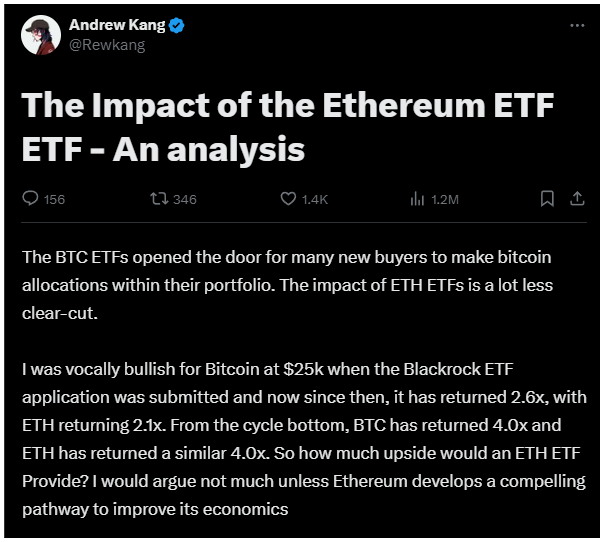Gary Gensler, chair of the U.S. Securities and Exchange Commission, has confirmed that the approval process for spot Ethereum ETFs is moving forward smoothly. Are we happy now?
Paperwork
The approval for Ether ETFs comes under the 19b-4 applications from major asset managers already involved in Bitcoin ETFs.
These include firms like Fidelity, BlackRock, Bitwise, and Grayscale, along with ETF offerings from Franklin Templeton, VanEck, Ark, and Invesco Galaxy.
One important aspect of these Ether ETFs, compared to the actual Ethereum ownership is that they don’t include staking.
This decision aligning with the SEC’s stance on staking-as-a-service offerings, which it considers potential unregistered securities.
Different breed
There are mixed predictions about Ethereum’s price following the ETF launches. Ont he lower end of the scale, Andrew Kang from Mechanism Capital suggests that Ethereum could drop to as low as $2,400 after the launch.

This prediction is based on the historical performance of Bitcoin after its spot ETF was approved, because it crashed after it.
Kang also notes that Ethereum maybe won’t see the same level of institutional buying as Bitcoin.
He estimates that Ethereum inflows could be about only 10% of Bitcoin’s, due to different investor bases for each cryptocurrency.
For example, Bitcoin is seen as a macro asset appealing to institutions like macro funds, pensions, and endowments, but Ethereum is seen more as a tech asset appealing to VCs, crypto funds, technologists, and retail investors who aren’t as restricted in accessing crypto.
Ethereum isn’t that popular
Kang predicts that the true net buying flows for Ethereum could be around $0.5 billion within the first six months, with reported net flows possibly reaching $1.5 billion.
Despite some skepticism about the approval odds from industry experts, Kang believes this reflects a wider lack of enthusiasm for Ethereum ETFs among traditional financial investors.
He outlines a base case scenario where Ethereum’s market capitalization, being roughly a third of Bitcoin’s, combined with an ‘access factor’ of 0.5, could lead to about $0.84 billion in true net buying and $2.52 billion in reported net flows. Which numbers aren’t that big, indeed, but still nice.


